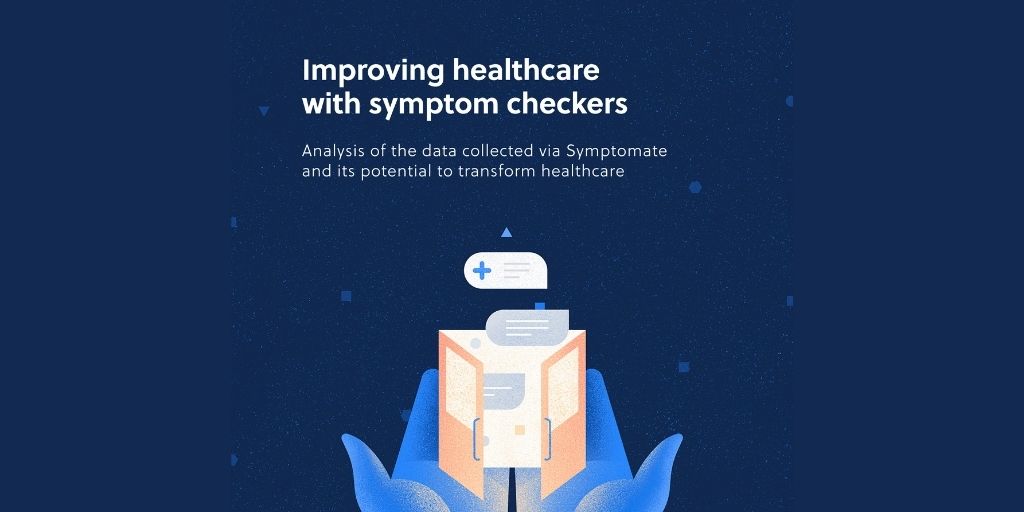
Infermedica, provider of an AI-driven pre-diagnostics and care coordination platform, has released an analysis of data from its Symptomate symptom checking tool, which unveils the regularity with which patients seek no – or the inappropriate level of – healthcare, and the changing attitudes toward digital health technology.
COVID-19 has strained healthcare organisations across the world and many continue to deal with the effects. Increased hospital waiting times mean some patients have to travel hundreds of miles for a bed, while many remain concerned about attending routine checkups, placing them at risk of not catching and treating issues early. With the need for other avenues to provide preliminary medical advice more efficiently and remotely, symptom checkers provide a solution.
Symptomate is an independent, stand-alone AI-driven tool that provides initial diagnoses and triage levels directing users to self-care at home, seek medical consultation (either in-person or via telemedicine), or visit the emergency department. It also provides a recommendation of the type of specialist physician to visit.
Symptomate has conducted more that 10 million health checkups globally and the analysis below is based on 2,113 users between February – April 2021.
Key findings:
Patients need guidance
• Just 17% of the respondents with the initial intention to self-care were correct about the level of help they required – this means many patients were going untreated for issues which could have been life threatening
• 40% of users don’t know what level of medical help they need, leading to two outcomes, heading to the wrong place for inappropriate care or just not seeking care at a medical facility
• Only 26% of the respondents’ initial intention matched the solution’s triaged recommendations
“Patients’ lack of understanding of the medical help they need is no surprise, but it does show why doctors’ and hospital waiting rooms are often filled with people that don’t need to be there,” said Irv Loh, Chief Medical Officer & Co-founder at Infermedica. “In already strained healthcare systems, this misuse of resources may not only generate unnecessary expenditure, but could potentially cost lives. Symptom checkers provide an easy, accessible tool that can help guide patients to where they actually need to be to receive the appropriate care.”
Symptom checkers provide guidance, but patients are still in control
• Of the respondents who had no initial intention prior to using Symptomate, 55% who were recommended self-care stayed at home
• 56% of those who were recommended to seek consultation saw a doctor
• Overall, the checker successfully redirected 28% of users who initially sought an inappropriate level of care e.g., converting self-care to visiting a doctor or vice versa
• More than three quarters (77%) of respondents declared that after using Symptomate they were likely to change their mind about the perceived level of care
“While there is openness to using symptom checkers, it’s clear there is still room for greater acceptance and utilisation among patients,” adds Loh. “Making diagnosis technology a core part of everyone’s healthcare journey will take time and continued culture change. Physicians can help support this shift by championing such technology and its accuracy.”
Which specialist to visit
In the case of patients requiring specialty care, symptom checkers helped to streamline patients’ ability to get to the appropriate care, faster — in some cases bypassing an in-person visit with their general practitioner. According to the analysis, people received the following guidance:
• 34% were recommended to see GP for further consultation
• 11% were referred to a gastroenterologist
• 9% were referred to an orthopedist
• 9% were referred to a neurologist
• 8% were referred to a psychiatrist
“The benefits of using symptom checkers are clear. Patients can verify their health in just a few minutes, and they are not limited to a doctor’s office or working hours,” said Loh. “This type of technology is making healthcare more accessible, and guiding more patients to the care they need. There is still some way to go though, with only 56% of those who were recommended to see a doctor actually doing it – that can be potentially life threatening.
“Healthcare organisations have an opportunity to really encourage the use of symptom checkers and educate patients around their accuracy. Plus, their usage adds value to physicians, practices, and health systems too, by gathering important patient data before any consultation. This enables them to make informed decisions more quickly and make in-person care more patient-oriented. It also reduces the number of unnecessary patient visits, which allows more resources to be focused on serious issues.”
Wider analysis into the use of symptom checkers can be read in Infermedica’s report: Improving healthcare with symptom checkers.












